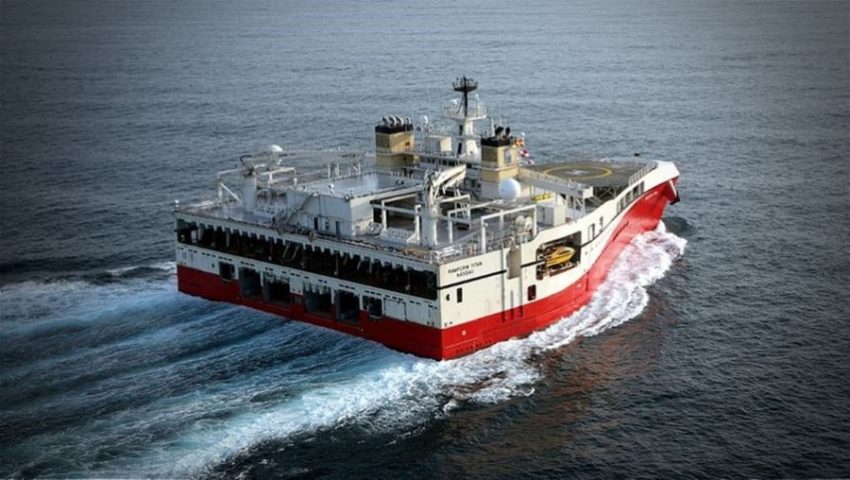Famous Ship Designs in History: Engineering Marvels Explained

Throughout history, the evolution of ship design has been a cornerstone of human advancement. From wooden vessels that navigated the ancient seas to steel giants that dominate the oceans today, ships have been both symbols of power and feats of engineering brilliance. This article delves deep into famous ship design in history, highlighting the ingenuity behind each and explaining how they revolutionized maritime engineering.
1. Ancient Egyptian Reed Boats – The Pioneers of Nautical Design
One of the earliest known ship designs, Egyptian reed boats date back to around 4000 BCE. Constructed using bundled papyrus reeds, these vessels were primarily used along the Nile River for transportation and trade.
Engineering Highlights:
- Buoyancy achieved through tightly bound reeds.
- Flat-bottomed design for easy river navigation.
- Simple sails and oars for propulsion.
While primitive by today’s standards, these boats laid the foundation for future maritime innovations.
2. Greek Triremes – Masters of Speed and Combat
The Greek trireme, used around 500 BCE, was a sleek warship engineered for speed and agility in naval battles. Its design featured three rows of oars on each side, manned by skilled oarsmen.
Key Design Features:
- Narrow hull for fast maneuvering.
- Ram at the bow to strike enemy ships.
- Lightweight materials for quick acceleration.
Triremes played a crucial role in battles such as the Battle of Salamis and were a marvel of ancient marine warfare strategy.
3. Roman Galleys – Versatile Naval Workhorses
Roman galleys evolved from Greek designs but were more versatile. They featured a combination of sails and oars, making them efficient for both war and commerce.
Engineering Innovation:
- Reinforced hulls for durability.
- Dual propulsion system.
- Elevated decks for soldiers and catapults.
Roman naval dominance across the Mediterranean was significantly due to these formidable ships.
4. Viking Longships – Symbol of Exploration and Conquest
From the 8th to 11th centuries, the Viking longship became iconic. These vessels were not only fast and flexible but also shallow enough to navigate rivers and coastal areas.
Design Breakthroughs:
- Symmetrical bow and stern for easy reversal.
- Clinker-built planks for strength and flexibility.
- Square sail for wind propulsion alongside oars.
The Viking longship design enabled the Norsemen to explore, trade, and raid from Scandinavia to North America.
5. Chinese Junks – Sophisticated and Ahead of Their Time
Dating back to the Han Dynasty and reaching full development during the Song Dynasty, Chinese junks were some of the most advanced ships of their time.
Notable Engineering Features:
- Watertight bulkheads for enhanced safety.
- Balanced rudders for better control.
- Fully battened sails for wind efficiency.
Used for trade, exploration, and military purposes, junks influenced ship designs globally, especially during the age of the Ming Treasure Fleet under Admiral Zheng He.
6. The Caravel – Powering the Age of Discovery
The Portuguese caravel, developed in the 15th century, was instrumental in ushering in the Age of Exploration. Its revolutionary design combined speed with long-distance capabilities.
Design Highlights:
- Lateen (triangular) sails for superior wind navigation.
- Deep keel for ocean stability.
- Compact size allowed exploration of unknown coasts.
Caravels helped explorers like Vasco da Gama and Christopher Columbus chart new worlds, changing the course of history.
7. The Galleon – The Seaborne Fortress
Evolving from caravels, the Spanish galleon in the 16th century was designed for both warfare and treasure transport. These ships were central to the transatlantic trade and military dominance.
Engineering Marvels:
- Multiple gun decks with broadside cannons.
- Tall masts for powerful wind capture.
- Strong hulls to endure long voyages.
Galleons became the backbone of naval empires and featured prominently in battles and commerce.
8. HMS Victory – Pinnacle of Wooden Warships
Commissioned in 1765, HMS Victory remains one of the most famous naval ships in British history. It served as Admiral Nelson’s flagship during the Battle of Trafalgar in 1805.
Key Features:
- 104 guns across multiple decks.
- Oak construction for enhanced durability.
- Complex rigging system with over 26 miles of rope.
The ship combined superior firepower with innovative construction, playing a crucial role in British naval supremacy.
9. USS Constitution – “Old Ironsides”
Launched in 1797, the USS Constitution is the oldest commissioned naval vessel still afloat. Nicknamed “Old Ironsides,” it was renowned for its resilience during the War of 1812.
Engineering Strengths:
- Live oak and copper fastenings for impact resistance.
- Streamlined hull for speed.
- Heavily armed with 44 cannons.
Its legendary toughness and design earned it a revered place in American naval history.
10. RMS Titanic – Luxury and Tragedy in Design
Perhaps the most famous ship in history, the RMS Titanic was a marvel of early 20th-century engineering. Though remembered for its tragic sinking in 1912, its design was groundbreaking for its time.
Innovative Features:
- Watertight compartments (though not fully sealed).
- Electrically powered elevators and lights.
- Lavish interior emulating luxury hotels.
Its story serves as both a celebration and a cautionary tale of human engineering ambition.
11. USS Enterprise (CV-6) – WWII Aircraft Carrier Legend
The USS Enterprise, a Yorktown-class aircraft carrier, was among the most decorated U.S. ships in World War II.
Design Mastery:
- Aircraft hangar decks and elevators.
- Armored flight deck.
- High speed and agility for carrier warfare.
The ship’s impact on naval aviation strategy marked a shift from battleship dominance to air power at sea.
12. The Modern Aircraft Carrier – Floating Cities of Steel
Today’s nuclear-powered aircraft carriers, like the USS Gerald R. Ford, represent the height of naval engineering.
Engineering Innovations:
- Nuclear propulsion for nearly unlimited range.
- Electromagnetic aircraft launch systems (EMALS).
- Advanced radar and missile defense systems.
These floating fortresses house over 75 aircraft and serve as mobile bases for global military operations.
13. LNG Tankers and Container Ships – Titans of Trade
Modern container ships and LNG tankers are engineering wonders that drive the global economy.
Key Design Elements:
- Modular container stacking systems.
- Hydrodynamic hulls for fuel efficiency.
- Reinforced structures for massive loads.
Ships like the Ever Given, which famously blocked the Suez Canal, showcase both the power and vulnerability of these colossal vessels.
14. Eco-Friendly and Autonomous Ships – Future of Maritime Design
With rising environmental concerns and technological advancement, the future lies in green and autonomous ships.
Examples:
- MS Yara Birkeland – The first fully electric, autonomous cargo ship.
- NYK Super Eco Ship 2050 – Concept ship powered by hydrogen fuel cells and solar panels.
These innovations aim to reduce carbon footprints and operational costs while maintaining high efficiency.
Conclusion
The history of ship design is a saga of creativity, adaptation, and bold innovation. From simple reed boats to nuclear-powered behemoths, each vessel played a pivotal role in shaping civilizations, exploring unknown worlds, or defending territories. These famous ship designs not only represent engineering marvels but also stand as enduring symbols of human progress.
As maritime technology continues to evolve, tomorrow’s ships will likely be smarter, greener, and even more awe-inspiring—building upon the legacy of these historic giants.
FAQs
Q1: What is the most famous ship in history?
A: The RMS Titanic is arguably the most famous due to its luxurious design and tragic sinking.
Q2: Which ship design was most important during the Age of Discovery?
A: The Portuguese caravel, thanks to its speed and maneuverability, was crucial for long-distance exploration.
Q3: What made Viking longships unique?
A: Their shallow draft, speed, and reversible design made them ideal for both river and ocean navigation.
Q4: What is the role of modern aircraft carriers?
A: They serve as mobile airbases, projecting power across the globe and hosting up to 75 aircraft.
Q5: Are there environmentally friendly ships today?
A: Yes, modern ships like the MS Yara Birkeland use electric propulsion and aim to reduce emissions.



